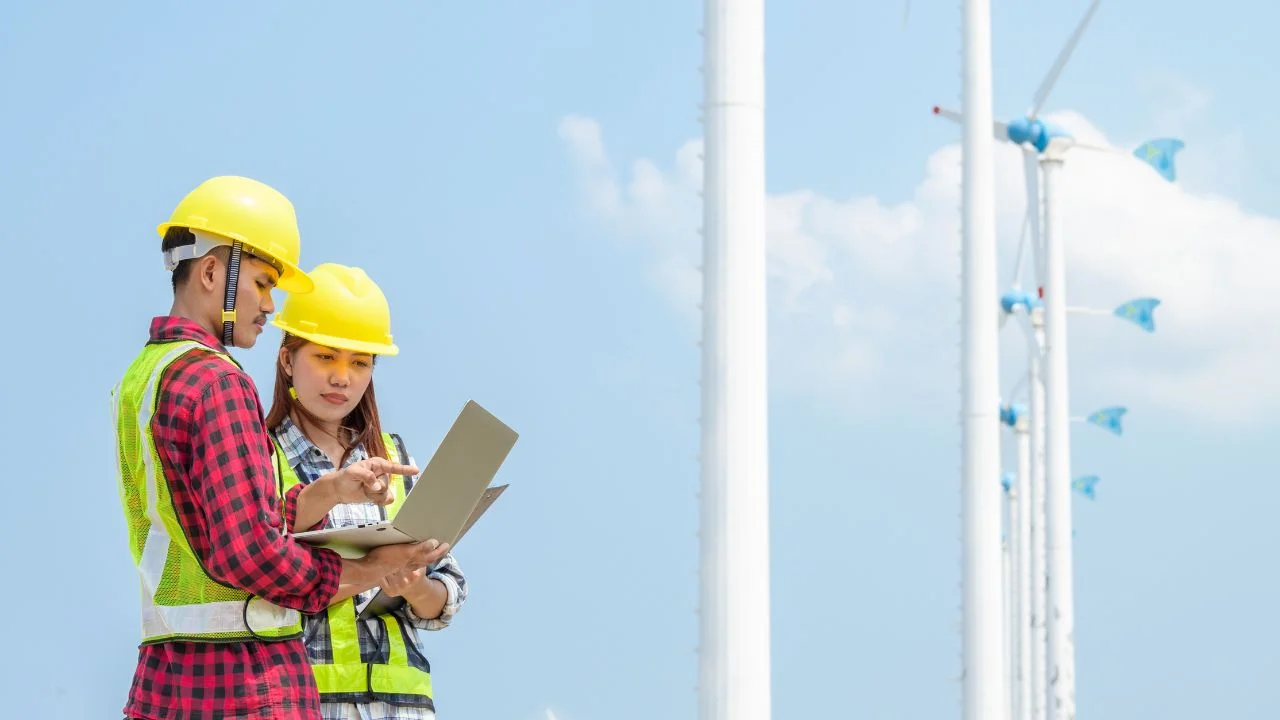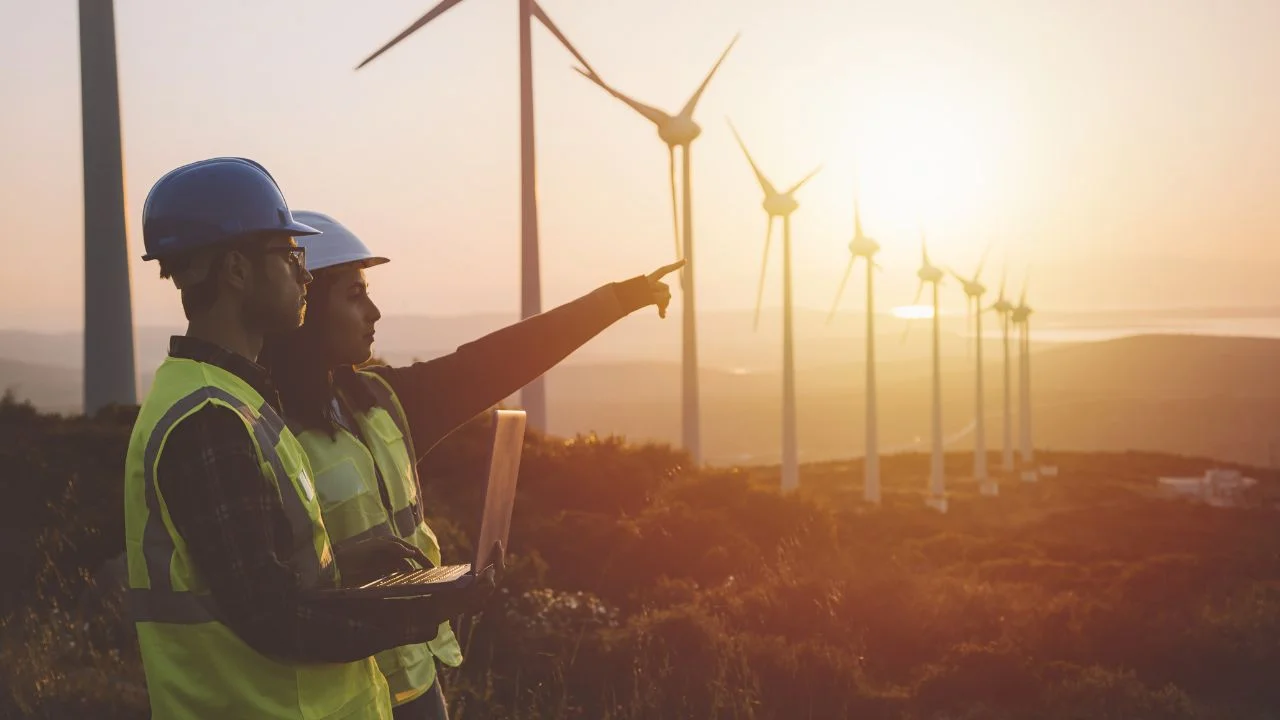Regional Talent Demands for Renewable Energy Projects in East Coast Australia, Taiwan and South Korea
24 Oct, 20259:51Key Takeaways: Unprecedented growth and competition: The Asia-Pacific renewable energy ...

Key Takeaways:
- Unprecedented growth and competition: The Asia-Pacific renewable energy sector is booming, creating intense competition for a limited pool of specialised talent, making strategic recruitment a top priority.
- East Coast Australia: Faces a critical shortage in grid integration, hydrogen and project development roles, exacerbated by competition from the mining sector.
- Taiwan: Has an urgent need for experienced solar and offshore wind experts to compensate for a small but emerging local talent pool.
- South Korea: Requires offshore wind fabrication, hydrogen and ESS engineers but must compete with dominant local conglomerates for top talent.
- Universal skills shortage: All three regions share a critical deficit in highly specialised, experience-heavy roles, necessitating a global search for candidates.
- Global mobility: Success hinges on attracting international talent, which requires expert navigation of complex immigration, compliance and cultural integration processes.
- Strategic partnership is key: A recruitment partner such as NES Fircroft, with deep regional expertise, a global talent network and specialised immigration support, can help you to overcome these challenges and secure renewables professionals.
The global energy transition is no longer a futuristic ambition; it is an urgent, present-day reality with huge impacts on renewable energy recruitment in Asia-Pacific.
For example, globally in 2023 there were 16.2 million renewable energy jobs, up from 13.7 million in 2022 – primarily in solar PV (7.1 million), followed by biofuels (2.8 million), hydropower (2.3 million) and wind power (1.5 million).
This growth in demand for renewable energy is largely driven by numerous commitments to net-zero targets across the globe. One particularly noteworthy aspect is the International Energy Agency (IEA) highlighting that data centres are significant drivers of growth in electricity demand in many regions, as technology companies look to source clean operational energy: “After globally consuming an estimated 460 terawatt-hours (TWh) in 2022, data centres’ total electricity consumption could reach more than 1,000TWh in 2026.”
As nations within Asia-Pacific commit to net-zero targets, the region has seen a boom in renewable energy projects, driven by huge investment, technological innovation and supportive government policy. However, as in many other regions, this rapid growth has revealed a critical bottleneck: a skills gap in the renewable energy transition.
This blog examines the specific talent demands in Asia-Pacific across three key hotspots – East Coast Australia, Taiwan and South Korea – and explores why partnering with a specialist recruitment company like NES Fircroft is essential for navigating this complex and competitive market.

Asia-Pacific: A Renewable Energy Powerhouse
The Asia-Pacific region offers a perfect storm of conditions fuelling renewable growth: strong government mandates, declining technology costs, and soaring energy demand from developing economies and major industries. This makes it a global hotspot for investment, with projects scaling from vast offshore wind farms to enormous solar hubs. But this rapid development has outpaced the available local workforce, creating a scramble for specialised renewable energy talent.
Asia-Pacific Breakdown: Different Markets, Similar Challenges
While the overarching goal is decarbonisation, each of the three regions mentioned here presents a unique set of opportunities, targets and talent acquisition challenges.
1. East Coast Australia
In Australia, the government aims to reduce emissions by 43% by 2030 and reach net zero by 2050, which will be achieved through its Powering Australia plan. This is designed to create jobs and lower emissions by boosting renewable energy. The country has also released its 2024 National Hydrogen Strategy, which is intended to position Australia as a global leader in hydrogen.
Specific to the East Coast, there are many state-level policies and projects that are propelling the region to becoming a leader in renewable energy talent acquisition. For example, New South Wales is leading the charge with Australia’s first Renewable Energy Zone (REZ), designed to deliver at least 4.5GW of new network capacity by 2028 and connect 7.7GW of wind and solar projects.
However, there is a national shortage of workers that is expected to worsen and a critical need for more diverse skills: for example, an additional 42,000 energy workers are needed by 2030 to support both renewables and non-renewables.
- Talent demand: IRENA states that, nationally, renewable energy will require an expatriate force of skilled and experienced workers in solar PV, at least until skills programmes can close labour gaps. The move towards integrated systems on the East Coast is creating demand for solar, wind and hybrid energy experts. Key roles include:
- Grid integration specialists and electrical engineers: Experts who can manage the complexity of connecting renewable energy sources to the national grid.
- Project development managers: Professionals to navigate Australia’s intricate planning and approval processes.
- Hydrogen process engineers: Specialists in green hydrogen production, storage and transportation.
- Recruitment challenge: The domestic talent pool is insufficient for these niche, experience-heavy roles. Competition is fierce not only within the energy sector but also from mining companies undergoing their own green transitions, leading to significant salary inflation and retention issues.
2. Taiwan
At the end of 2024, Taiwan’s renewable energy installations had a total capacity of 21,067MW, comprising solar (14,281MW), wind (3,905MW), hydro (2,123MW), geothermal (7MW), waste (666MW) and biomass (84MW).
Even though perhaps overly ambitious renewable energy targets have been missed, the sector will continue to grow as the government continues to push renewables forward and has successfully attracted major international developers.
- Talent demand: The focus here is largely on solar and offshore wind. The most urgent recruitment demands are for:
- Marine warranty surveyors and naval architects: Specialists with expertise in the marine environment.
- Offshore project directors and construction managers: Leaders with a proven track record in delivering complex Engineering, Procurement, Construction and Installation (EPCI) projects.
- High-voltage specialists and cable engineers: Experts responsible for transmitting the power back to shore.
- Recruitment challenge: Offshore wind in particular is an emerging industry in Taiwan. The local market lacks professionals with decades of related experience, which is vital for managing project risk. This creates an urgent need to attract mobile international talent while simultaneously fostering local skills development.
3. South Korea
South Korea aims to decarbonise by quadrupling renewable energy capacity to 121.9GW by 2038, compared to 30GW in 2023.
After surpassing the 10% threshold in 2024, the share of renewable energy in South Korea’s power mix is projected to reach the target of 32.9% by 2038 (the global average is around 30%).
South Korea’s Green New Deal and commitment to carbon neutrality by 2050 are driving its energy transition. The nation is using its industrial background in manufacturing and shipbuilding to become a leader in wind and hydrogen, with projects like the Jeonnam offshore wind farm (with a capacity of 8.2GW by 2035).
- Talent demand:South Korea’s strategy is creating demand across the board, with particular emphasis on:
- Offshore wind foundation and fabrication experts: Tapping into its shipbuilding expertise for substructures.
- Fuel cell and hydrogen technology engineers: Driving innovation in the hydrogen value chain.
- Energy storage system (ESS) engineers: Critical for managing grid stability.
- Recruitment challenge: South Korea’s renewables sector must compete with the country’s chaebols (large conglomerates that dominate the economy) for top engineering talent. Plus, the country’s preference for permanent roles and a traditional corporate culture can sometimes be a barrier to attracting the global talent needed to transfer knowledge and meet project targets.
Cross-Regional Themes and Workforce Solutions
Despite their differences, these markets share common threads. A skills shortage in specialised areas like high-voltage engineering and offshore project management is a universal challenge, which makes global mobility paramount. Recruiting the international professionals who can deliver these projects requires deep knowledge of immigration logistics, compensation benchmarking and cultural integration.
Building a renewable energy workforce in Asia-Pacific requires a multi-faceted solution: recruiting from mature markets like Europe, attracting workers from parallel industries and implementing knowledge-transfer programmes to upskill local talent. This is a task for a strategic partner with a global network and local market intelligence.
Partner with a Renewable Energy Recruitment Specialist
At NES Fircroft, we can help you to navigate complex renewable energy recruitment. We have a proven track record since 1995 across Oceania, Taiwan and South Korea, with dedicated consultants who understand the nuances of each region’s regulatory, commercial and cultural landscape. Our immigration services include:
- Work authorisation support (work permits, visas etc)
- Compliance guidance and regulatory updates
- Strategic immigration planning and advisory services
- Relocation and on-the-ground support
- Tailored solutions for every business.
In a market defined by speed and scarcity, securing top talent is your most critical advantage.
Contact us today to discuss how we can assist with your renewable energy talent demand in Asia-Pacific.










